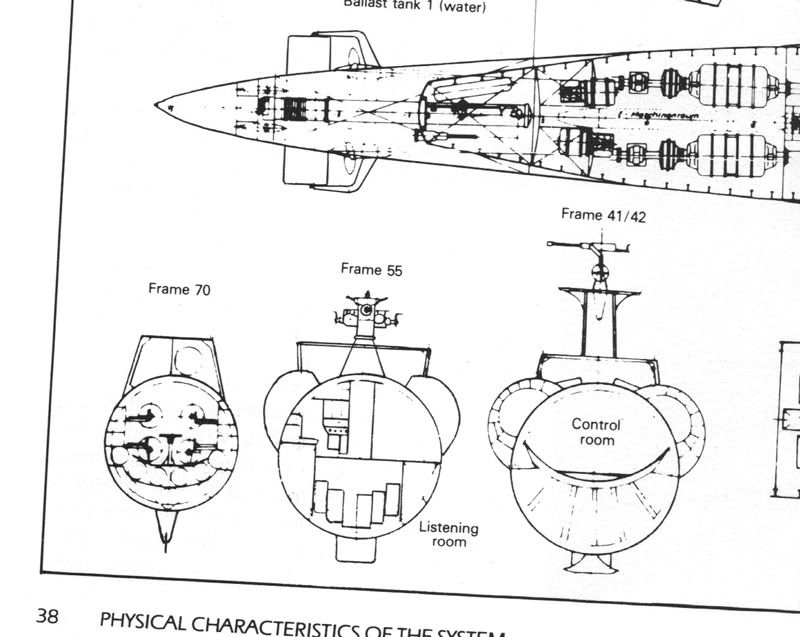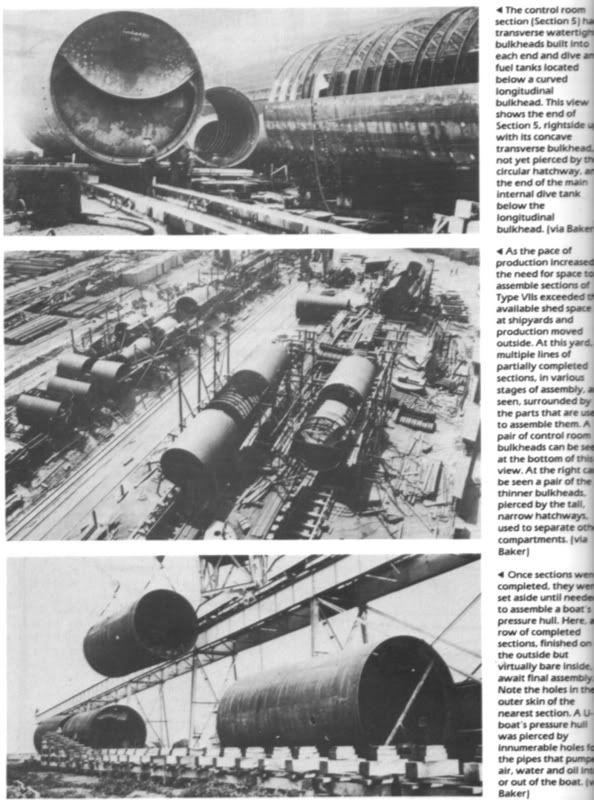I've included some pictures below, but...
It will help you to understand what it goes like if you know a little bit about how they built the Type VII. It was built out of circular steel sections which were welded together, the middle two were purely cylindrical, but those which tapered to the bow and stern were basically conical. All of these were solid tubes which then had holes pierced in them where necessary, such as for the torpedo tubes, hatches and access to the conning tower, this formed the pressure hull. When the pressure hull was in one piece, the hole for the conning tower would be cut and thus things could be lowered inside to build the interior. While this was going on, the outer hull could be added.
The outer hull was basically streamlined plating added fore and aft, with a deck along the top, supported by steel ribs which were welded to the pressure hull, the ribs typically being 60 centimetres apart, the outer hull was pierced with the free-flooding holes but where it met the saddle tanks, it was supported on rib stanchions thus leaving a gap between the outer hull plating and the top of the saddle tanks, and you can see these supporting ribs on a picture I have attached. Only on the underside in the centre section was the pressure hull used to form part of the exterior shape (underneath).
So what you basically have is a big long cigar shape, with the outer hull sitting on top of it, with a big gap in between along the top so that things like external stowage, retractable bollards the anchor winch motor etc etc have somewhere to go. Sort of a bit like a 'sprung floor'. This gap being the reason for the many lift-up hatches along the deck, to allow access to various bits and pieces, although some of these access hatches were only intended to be used for dockyard servicing. The deck, incidentally, was covered with wooden planking so that it would not ice up so quickly as steel, and because it was simpler to leave a 1 centimetre gap between the planks so that it would assist in dive flooding, than it was to make something of that nature in steel.



Hope this helps. I've got plenty more reference if you need it, so just shout out if you'd like to see more.

Chock